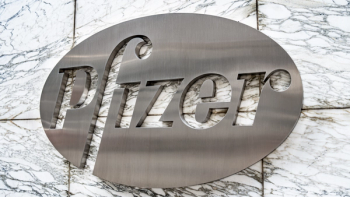
AbbVie Positions Temab-A ADC for Tumor-Agnostic Use in Multiple Cancers
Pedro Valencia, VP, asset strategy leadership, oncology, AbbVie, explains how the company is advancing Temab-A across multiple tumor types targeting c-Met, with the goal of establishing it as a pipeline-in-a-molecule.
In an interview with Pharmaceutical Executive, Pedro Valencia, VP, asset strategy leadership, oncology, AbbVie, discussed the company’s expanding efforts in solid tumors, a space where it is still relatively new compared to its established presence in hematologic cancers. Speaking on the sidelines of the 2025 ASCO Annual Meeting, Valencia outlined AbbVie’s strategy for prioritizing tumor types and investigational therapies within its pipeline, emphasizing a data-driven, patient-centric approach. From recent antibody-drug conjugate (ADC) approvals to promising early signals in rare neuroendocrine tumors, AbbVie is rapidly evolving its oncology footprint with the goal of transforming treatment paradigms and reducing reliance on traditional chemotherapy.
Pharmaceutical Executive: Temab-A has shown promising results in EGFR-mutated NSCLC and is being explored in colorectal cancer as well—how does AbbVie view the potential of this ADC as a tumor-agnostic platform versus tumor-specific development?
Pedro Valencia: It all starts with the targets we’ve selected for our ADC portfolio. As you know, ADCs are composed of an antibody that binds to a protein commonly overexpressed in cancer cells—but not, or only minimally, expressed in normal tissues. It’s essentially a Trojan horse or a smart bomb: the ADC binds to the target on the cancer cell, is internalized, and then releases a highly toxic payload to kill the cell. That mechanism makes every step in ADC development critically important.
With Temab-A specifically, two elements are particularly significant. First, the target we selected—c-Met—is a well-known receptor that is commonly overexpressed in many tumor types. It plays a vital role in cancer cell survival, as tumors rely on c-Met to signal for growth and division. Our ADC is designed to bind to c-Met, which is found in high levels in lung cancer, colorectal cancer, pancreatic cancer, head and neck cancers, and others.
We’re currently exploring Temab-A across at least seven tumor types in a basket study, with the most advanced development in lung and colorectal cancers. We’re very pleased with the early results. Because c-Met is so broadly expressed, we do see potential for Temab-A to serve as a “pipeline in a molecule”—similar to how HER2-targeted therapies or PD-1 inhibitors evolved into tumor-agnostic platforms.
Full Interview Summary: At the 2025 ASCO meeting, AbbVie highlighted its growing commitment to solid tumors by outlining how it prioritizes development within its oncology pipeline. While historically focused on hematologic malignancies, the company is now building momentum in solid tumors with an emphasis on unmet need, scientific opportunity, and potential for pipeline impact. AbbVie’s three current priority areas in solid tumors are gastrointestinal (especially colorectal), gynecologic (notably ovarian), and lung cancers. Recent approvals, including mirvetuximab for ovarian cancer and Teliso-V (telisotuzumab vedotin) for non–small cell lung cancer (NSCLC), mark significant progress.
Temab-A (and Teliso-V) targets c-Met, a protein overexpressed in multiple cancers, including lung, colorectal, pancreatic, and head and neck cancers. Its broad expression makes c-Met a strong target for tumor-agnostic development, akin to HER2 or PD-1 therapies. AbbVie is exploring this approach with Temab-A in a trial spanning at least seven tumor types, including lung and colorectal cancers being the most advanced.
Another investigational therapy, ABBV-706, targets SEZ6, a lineage marker in neuroendocrine tumors, including small cell lung cancer (SCLC). Data presented at ASCO showed encouraging response rates of 30–50% in rare neuroendocrine tumors—substantially higher than typical chemotherapy response rates. AbbVie plans to expand 706 into late-stage studies for SCLC and explore other neuroendocrine populations.
Patient advocacy is central to AbbVie’s strategy, helping inform development priorities beyond survival endpoints. For example, patient feedback highlighted Elahere’s ability to avoid alopecia as a significant benefit.
Key near-term milestones include pivotal trial launches and data readouts across lung (EGFR-mutant and wild-type NSCLC, SCLC), GI (colorectal and pancreatic), and gynecologic cancers. AbbVie also plans to expand next-generation ADCs, aiming to broaden activity across varying levels of FRα expression and further reduce chemotherapy reliance.
Newsletter
Lead with insight with the Pharmaceutical Executive newsletter, featuring strategic analysis, leadership trends, and market intelligence for biopharma decision-makers.




